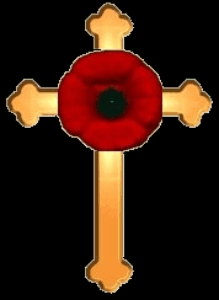|

C/JX-169711
Telegraphist
Robert Alexander Steel

1918/10/28 - Born Glasgow, Scotland
Royal Navy
HMS Encounter
Service
HMS Encounter
HMS Encounter was an E-class destroyer built for the Royal Navy in the early 1930s. When World War II began in September 1939. She participated in the Norwegian Campaign before joining Force H in mid-1940 and took part in the Battles of Dakar and later in the year battle at Cape Spartivento.
The ship was transferred to the Mediterranean Fleet in 1941 where she escorted convoys to Malta. While refitting Encounter was badly damaged at Malta and was again assigned to Force H on completion of repairs.
Later in the year, Encounter was transferred to the Eastern Fleet in Singapore and spent several months in early 1942 on convoy escort duties under the control of American-British-Dutch-Australian Command (ABDACOM). She was one of the Allied ships assigned to intercept Japanese invasion convoys during the Dutch East Indies Campaign in February 1942 and participated in the Battle of the Java Sea. On 1st March Encounter was sunk a few in the Second Battle of the Java Sea. Most of the crew were rescued by a Japanese ship the next day and became prisoners of War.
On 25th February, the new commander of Allied naval forces in the East Indies, Vice Admiral Conrad Helfrich of the Royal Netherlands Navy, ordered all available warships to join the Dutch Rear Admiral Karel Doorman's Eastern Striking Force at Surabaya. Encounter, together with the destroyers Jupiter and Electra, escorted the British heavy cruiser Exeter and the Australian light cruiser Perth to Surabaya.
HMS Exeter
The force of five cruisers and nine destroyers departed Surabaya at 18:30 to intercept the Japanese invasion force off Eastern Java but the Japanese force were further North than anticipated.
On the 27th February at 09.35 the Japanese located Doorman’s intercepting force and attacked. Doorman ordered a return to Surabaya at 10:30. At 14:37 the Kanoya Air Group attacked with eight bombers just as they were about to enter Surabaya Harbour. Reports were then received of Japanese ships 90 miles to the north and Doorman ordered his ships to turn about to intercept them.
The commander of the Japanese force Rear Admiral Takeo Takagi, intercepted Doorman’s ships with a light cruiser and seven destroyers plus two heavy cruisers, the Nachi and Haguro. The Haguro scored a hit on HMS Exeter’s boiler room, causing Exeter to slow up. Perth put up a smoke screen to try to save Exeter which having reduced speed to 5 knots and headed south for Surabaya Harbour, escorted by Encounter and the Dutch destroyer Witte de With. In the pursuing battle the Japanese destroyer Asagumo was damaged by Electra but it still kept firing and managed to sink the British ship at 17.46.
USS Pope
After temporary repairs and refuelling at Surabaya, the Exeter, Encounter and American destroyer Pope were ordered to Colombo, Ceylon on the 28th February and they sailed via the Sunda Strait.
On 1st March the Japanese heavy cruisers Nachi, Haguro, Myo¨ko and Ashigara and the destroyers Akebono, Inazuma, Yamakaze and Kawakaze were waiting to intercept them. Being intercepted at 08.00 the Allied ships put up a smoke screen and turned away East from the Japanese to the North and South. Although the Exeter reached speeds of 26 knots she again suffered a hit on her boiler room. Loosing all power by 11.20. The Japanese destroyer Inazuma closed in for a torpedo attack, hitting Exeter with two torpedoes on her starboard side, with no hope of saving Exeter the crew took to the water and the ship sunk at 11.40. Encounter had turned back to help Exeter but was herself hit and Lieutenant Commander Eric Morgan ordered ‘abandon ship’ so Encounter could be sunk to save her getting into Japanese hands, Encounter sunk at 12.10. Pope was also sunk two hours later.
The surviving crews of the three ships were picked up by the Japanese and became prisoners of war.
Japanese PoW
1942/03/01 - Captured Sunda Straits
Taken to Makassar, Celebes
PoW No. 266
Japanese Index Card - Side One

Japanese Index Card - Side Two


1942/10/10 - Transported from Makassar, Celebes to Japan in Asama Maru
With 300 British, 500 Dutch
These were mostly survivors of the ‘Battle of the Java Sea’
1942/10/23 - Arrived Japan
1942/10/25 - Yahata Provisional PoW CAMP Nagasaki
New PoW No. 1266
Work was connected with Kawanami Shipbuilding
1943/01/01 - Name changed to Fukuoka, Nagasaki, Japan
1943/03/01 - Name changed to Fukuoka, No. 2 Nagasaki, Japan
Fukuoka 2 was on the island of Koyagi Shima, five miles out in Nagasaki Bay. The atom bomb explosion was clearly visible from the camp.
1945/09/13 - Liberated
Died
1958
Cause of death Leukaemia
Information
Steve Henrich
Battle of the Java Sea
Japanese Transports
Roger Mansell - Fukuoka No.2. Nagasaki
KEW Files:- WO 361/773, WO 345/49, WO 361/1961, WO 392/26, WO 361/1254,
|